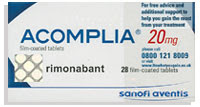Another bites the dust

Pharma's big brother, FDA yesterday released the recommendations of its endocrinologic and metabolic advisory board who met to ascertain the safety of Sanofi's Acomplia. The panel of 14 experts have unanimously given Acomplia a shake of the head due to increased suidical rates observed in its clinical trials. (http://money.cnn.com/2007/06/13/news/companies/sanofi/index.htm) While the fate of this once-highly-touted-to-be-the-next-blockbuster drug now hinges on FDA's final decision on its approval, the ground seems to be fast sinking from beneath Sanofi's feet.
Although it is already available in Europe and few other countries, Singapore's HSA usually looks towards FDA before reviewing any products for local approval. this turn of event is bound to implicate the approval process locally.
Besides the tedious reanalysis of the NCE's projections, etc, etc. any company caught in a similar situation would be fumbling with issuing corporate statements and internalizing communications. while most non-approvals tend to affect the immediate share prices rather than the ongoing business, it is still a hassle to deal with.
After the Vioxx incident, FDA has certainly tightened its regulatory reins, this has resulted in many pharmas having to delay new product launches/ indications to produce more data. most big pharmas have experienced at least one major setback in the aftermath. AZ chucked the very promising warfarin-substitute, Exanta, after FDA's failed approval despite usage in most parts of Europe. Pfizer quickly released Torcetrapib without even attempting a FDA approval. BMS's muraglitazar was meant to be the first DualPPAR alpha-gamma ligand which at its late stage, was shoved down the bin by its maker and supposed partner, MSD.
Needless to say, non of these drugs made it to our sunny island.
I often question why local companies would commence their pre-marketing activities so prematurely. Surely, the agonising difficulty in having to salvage the companies' image to the customers after building up such excited levels of anticipation amongst them is deterrent enough. but i still see companies hosting extravagant dinners and sponsoring offsite meetings to pre-empt the impending arrival of the so-called blockbuster. more importantly, instead of counting your chicks before they hatch, shouldn't the marketers be more involved in the strategic planning and determining best forms of market access instead of singing about how the new cure-all compound would finally bridge the unmet medical need...
I have little sympathies for these PMs who will may now have to face the uncertain fate of handling a less glamourous product (best case scenario) alternately, the company may just reassign them to cover SFE until the next pipeline dream comes along.



